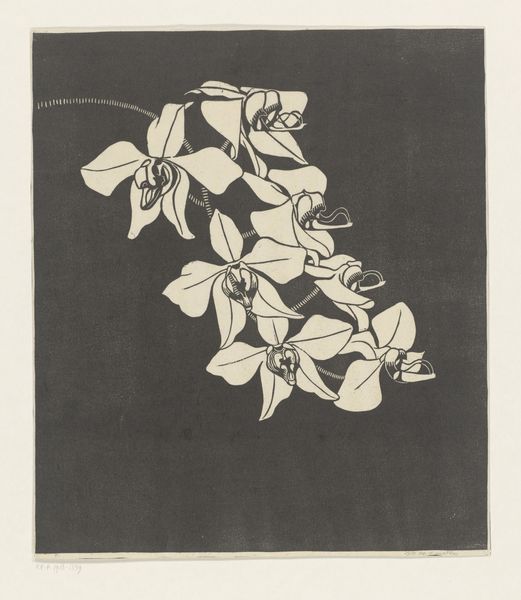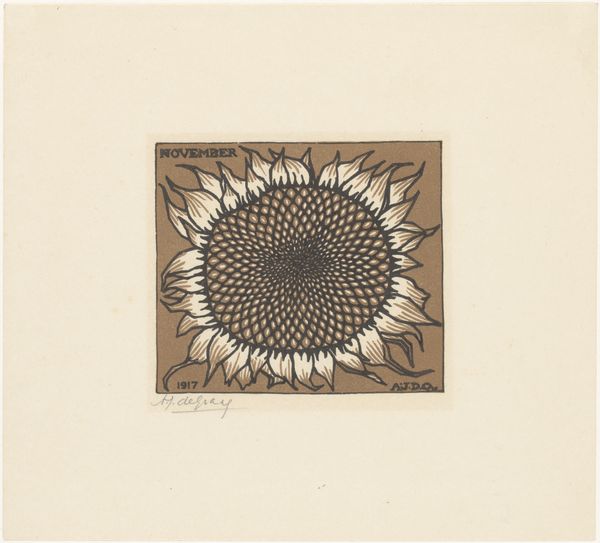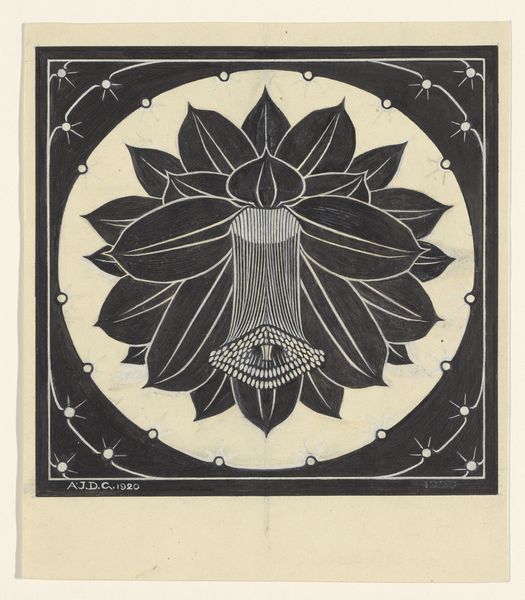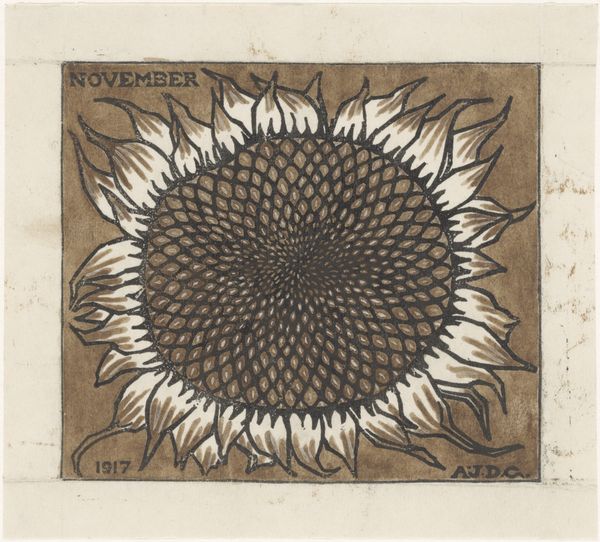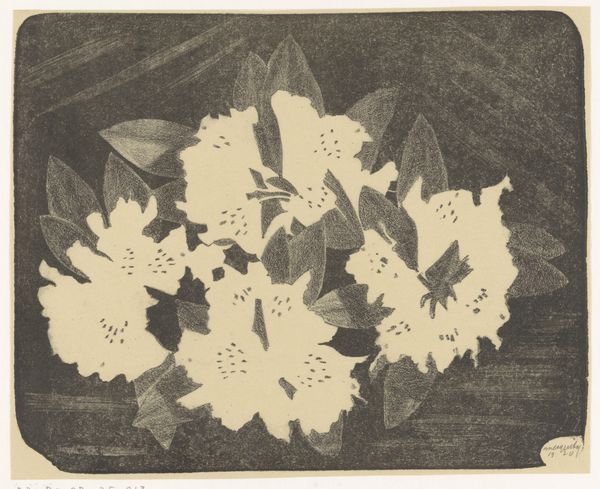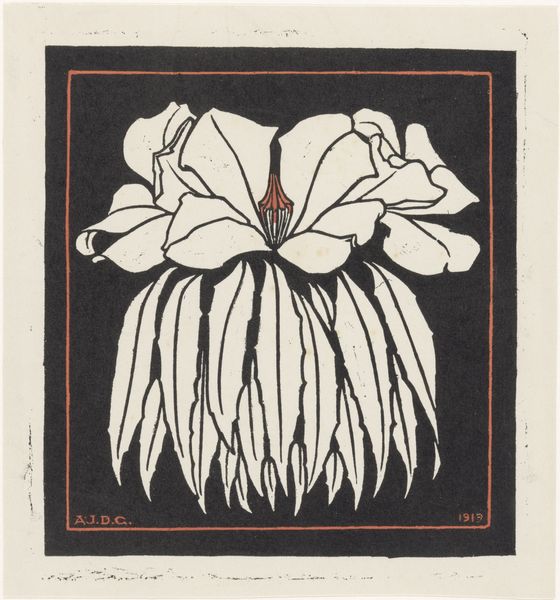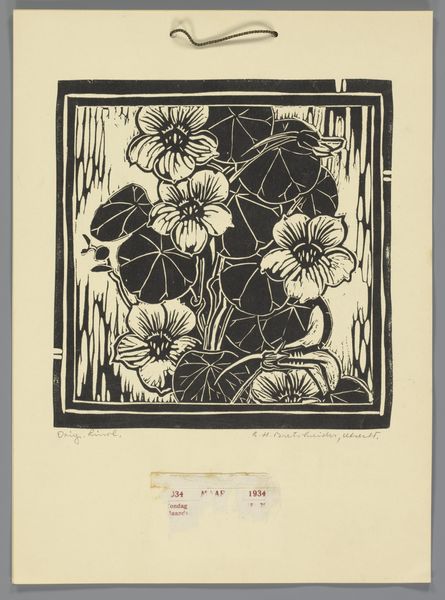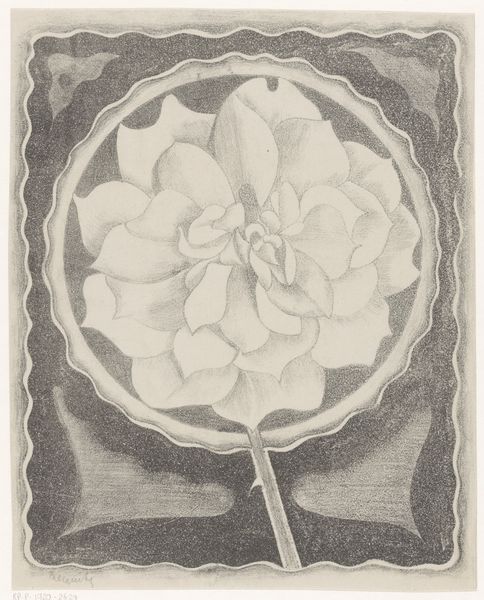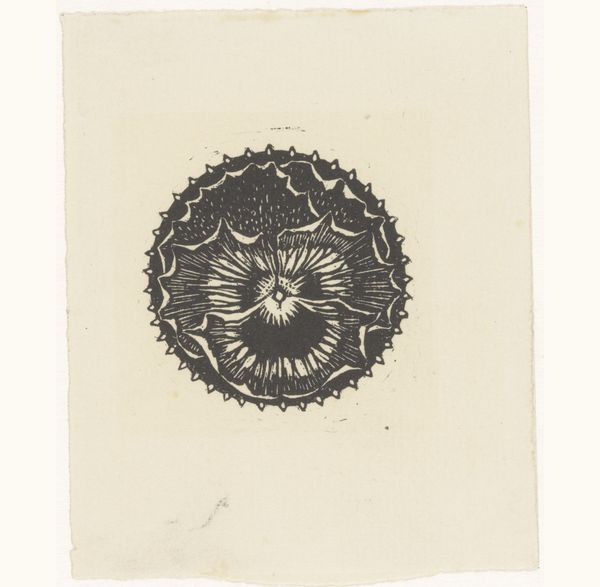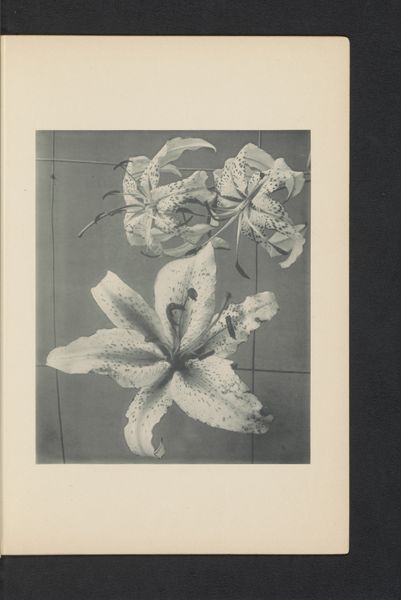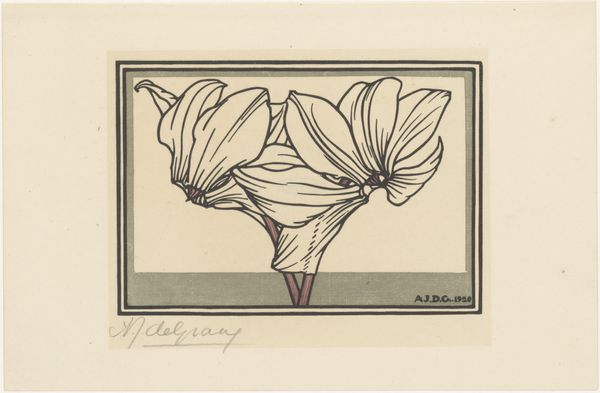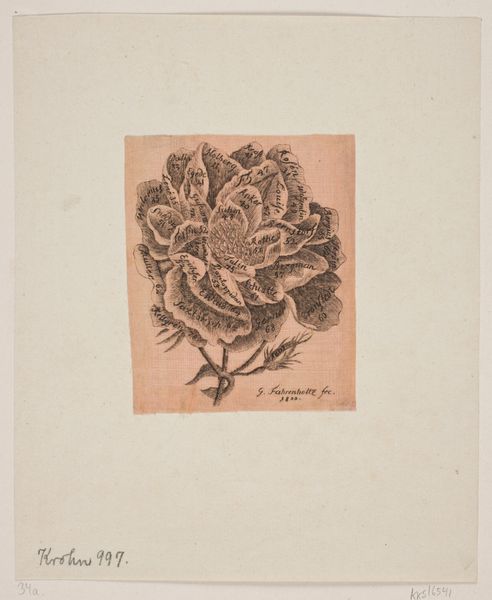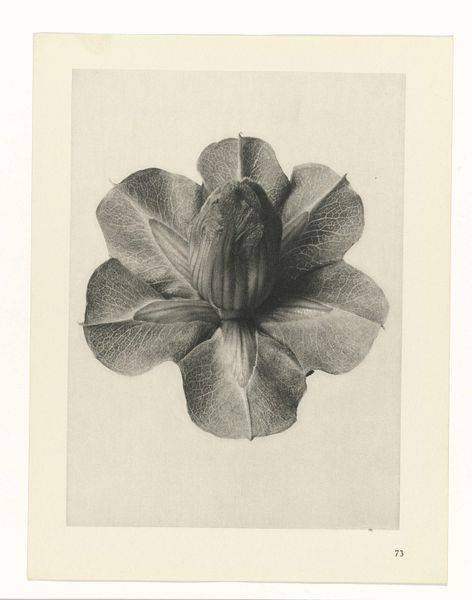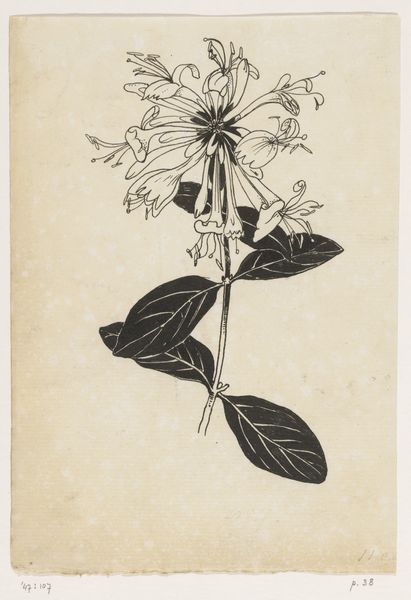
drawing, print, linocut, paper, ink
#
drawing
#
art-nouveau
# print
#
linocut
#
flower
#
paper
#
ink
#
linocut print
Dimensions: height 135 mm, width 147 mm
Copyright: Rijks Museum: Open Domain
Curator: Here we have "Bloem," by Julie de Graag, an exquisite linocut print created sometime between 1887 and 1924. The work resides here at the Rijksmuseum. Editor: My initial reaction is a sense of serene formality. The muted palette and strong lines create a balanced, almost architectural quality to the floral motif. Curator: It's intriguing to consider De Graag's position as a female artist working during a period of significant social change and growing artistic innovation. Her work reflects both the decorative style of Art Nouveau, as we can appreciate here, as well as a turn-of-the-century sentimentality regarding the natural world, rendered through the democratization of printmaking. Editor: Yes, the simplification of form, rendered with linocut, reduces nature into geometric segments and stylized curves. Note how the central flower is organized within a defined, rectilinear space, emphasizing flatness, and rhythmic interplay between positive and negative forms. The limited color scheme also highlights the structural and abstract qualities of the bloom. Curator: The floral image has historically held enormous symbolic value. One wonders, why the artist featured a flower during her artistic journey? Perhaps because in its ubiquity the natural motif serves as a focal point to test innovative aesthetic forms or question and destabilize established cultural norms? Editor: Perhaps! Either way, De Graag skillfully manipulates our perceptions. While referencing traditional botanical illustration, she embraces a modern sensibility. By doing so, her depiction teeters between representation and something near complete abstraction. The strategic use of shading, to suggest dimension without sacrificing its essential flatness, adds another level of sophistication. Curator: The historical impact of graphic arts is too often dismissed, particularly those crafted by female artists during the emergence of modernism. Yet their creations were pivotal to a broad shift of artistic values during that period of transformative artistic production and visual communication. Editor: Precisely! This one, elegant image embodies both simplicity and complexity, revealing an aesthetic dynamism when given the time and space for analysis. Curator: It’s an eloquent intersection of nature and industry; that, to me, signifies Julie de Graag’s lasting legacy. Editor: Agreed, a testament to how subtle choices amplify an artwork’s lasting impact.
Comments
No comments
Be the first to comment and join the conversation on the ultimate creative platform.
